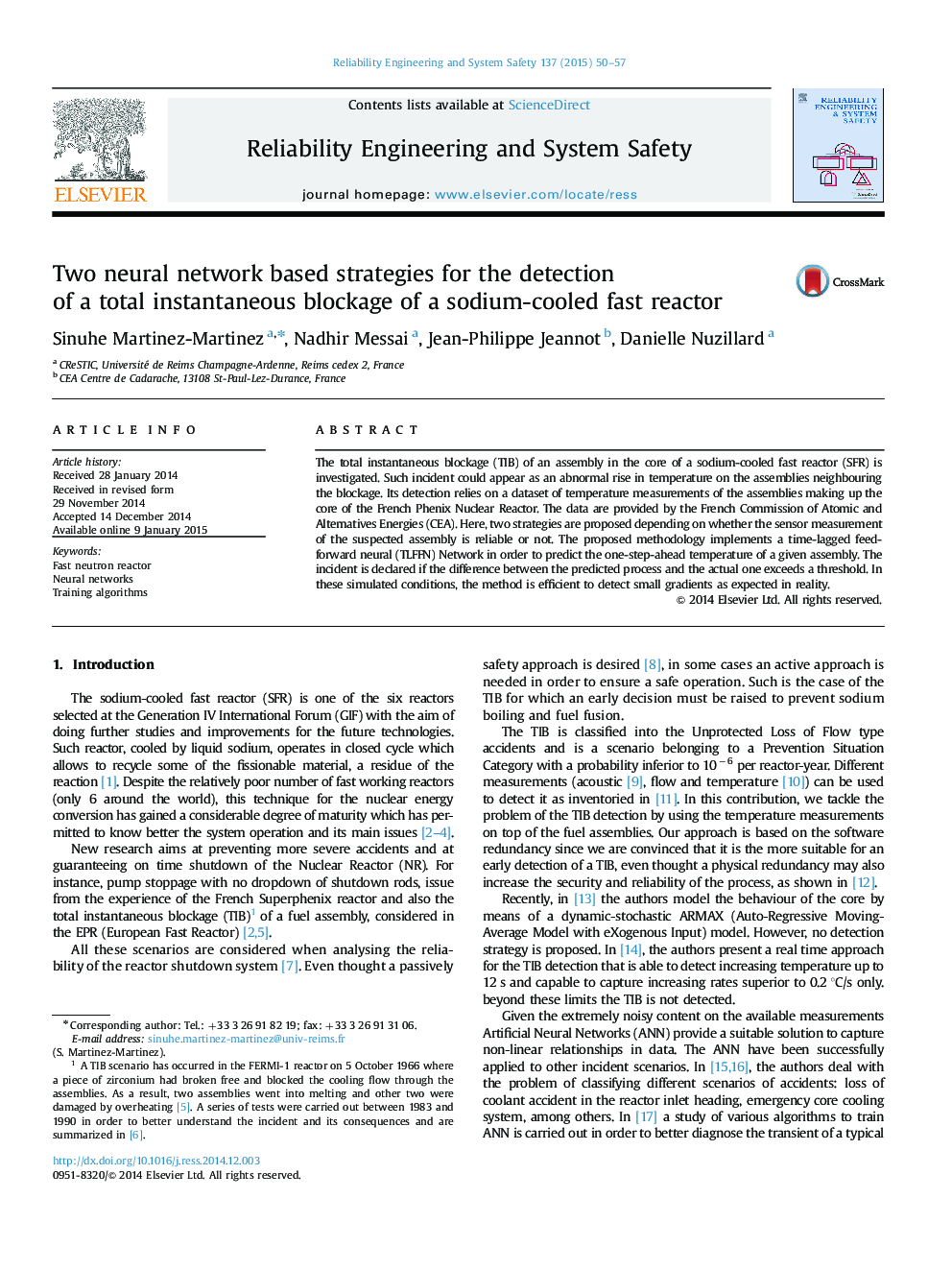| Article ID | Journal | Published Year | Pages | File Type |
|---|---|---|---|---|
| 805525 | Reliability Engineering & System Safety | 2015 | 8 Pages |
•We study the total instantaneous blockage (TIB) of a sodium-cooled fast reactor.•The TIB symptom is simulated as an abrupt rise on temperature (0.1–1 °C/s).•The goal is to improve the early detection of the incident.•Two strategies laying on neural networks are proposed.•TIB is detected in 3 s for 1 °C/s and 18–21 s for 0.1 °C/s.
The total instantaneous blockage (TIB) of an assembly in the core of a sodium-cooled fast reactor (SFR) is investigated. Such incident could appear as an abnormal rise in temperature on the assemblies neighbouring the blockage. Its detection relies on a dataset of temperature measurements of the assemblies making up the core of the French Phenix Nuclear Reactor. The data are provided by the French Commission of Atomic and Alternatives Energies (CEA). Here, two strategies are proposed depending on whether the sensor measurement of the suspected assembly is reliable or not. The proposed methodology implements a time-lagged feed-forward neural (TLFFN) Network in order to predict the one-step-ahead temperature of a given assembly. The incident is declared if the difference between the predicted process and the actual one exceeds a threshold. In these simulated conditions, the method is efficient to detect small gradients as expected in reality.
